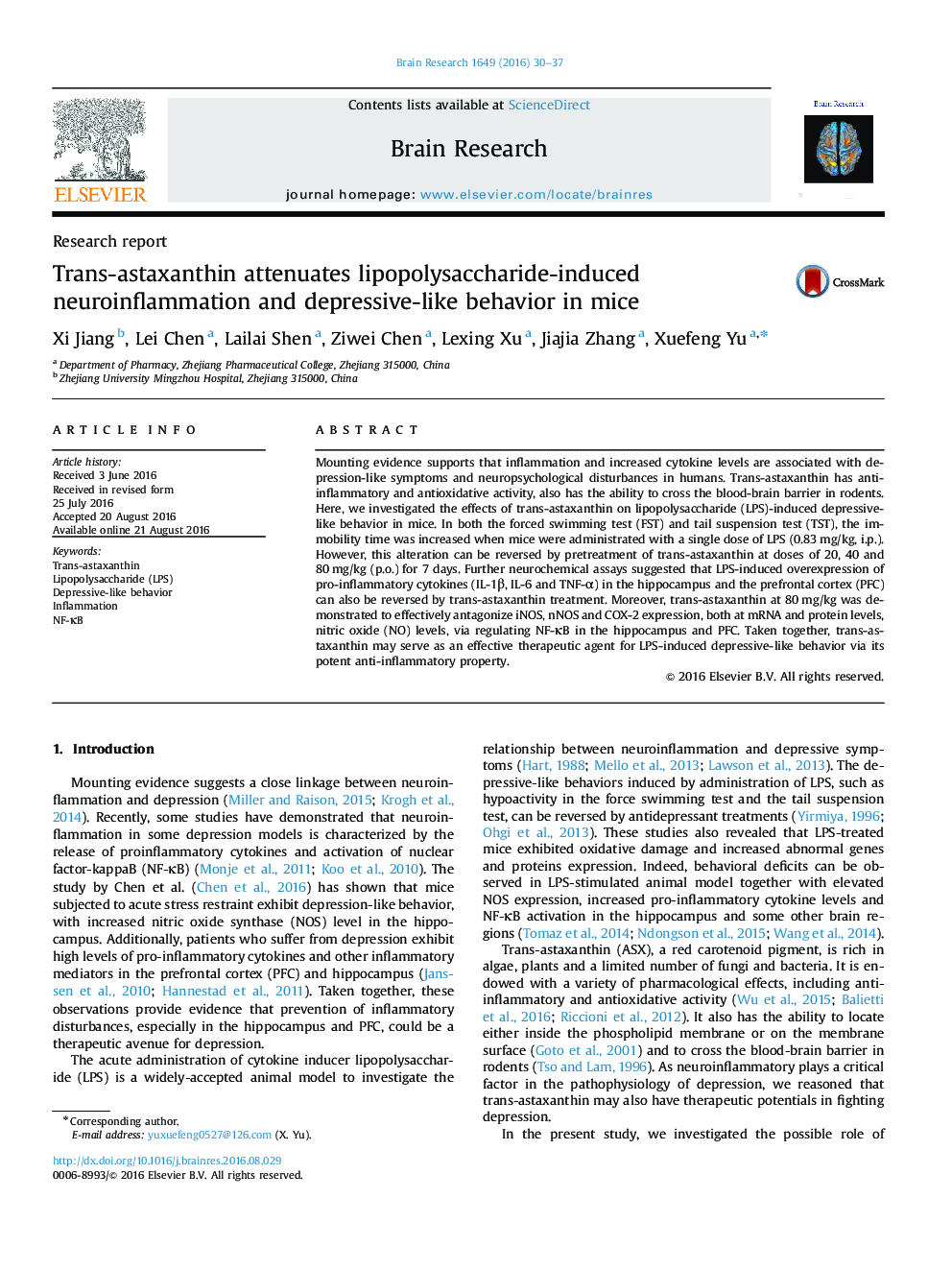| کد مقاله | کد نشریه | سال انتشار | مقاله انگلیسی | نسخه تمام متن |
|---|---|---|---|---|
| 4323498 | 1292348 | 2016 | 8 صفحه PDF | دانلود رایگان |
• Trans-astaxanthin prevented LPS-induced depressive-like behavior.
• Trans-astaxanthin prevented LPS-induced brain inflammation in the hippocampus and PFC.
• Trans-astaxanthin prevented LPS-induced pro-inflammatory cytokines, iNOS, nNOS and COX-2 increased via NF-κB signaling pathway in hippocampus and PFC.
Mounting evidence supports that inflammation and increased cytokine levels are associated with depression-like symptoms and neuropsychological disturbances in humans. Trans-astaxanthin has anti-inflammatory and antioxidative activity, also has the ability to cross the blood-brain barrier in rodents. Here, we investigated the effects of trans-astaxanthin on lipopolysaccharide (LPS)-induced depressive-like behavior in mice. In both the forced swimming test (FST) and tail suspension test (TST), the immobility time was increased when mice were administrated with a single dose of LPS (0.83 mg/kg, i.p.). However, this alteration can be reversed by pretreatment of trans-astaxanthin at doses of 20, 40 and 80 mg/kg (p.o.) for 7 days. Further neurochemical assays suggested that LPS-induced overexpression of pro-inflammatory cytokines (IL-1β, IL-6 and TNF-α) in the hippocampus and the prefrontal cortex (PFC) can also be reversed by trans-astaxanthin treatment. Moreover, trans-astaxanthin at 80 mg/kg was demonstrated to effectively antagonize iNOS, nNOS and COX-2 expression, both at mRNA and protein levels, nitric oxide (NO) levels, via regulating NF-κB in the hippocampus and PFC. Taken together, trans-astaxanthin may serve as an effective therapeutic agent for LPS-induced depressive-like behavior via its potent anti-inflammatory property.
Journal: Brain Research - Volume 1649, Part A, 15 October 2016, Pages 30–37
